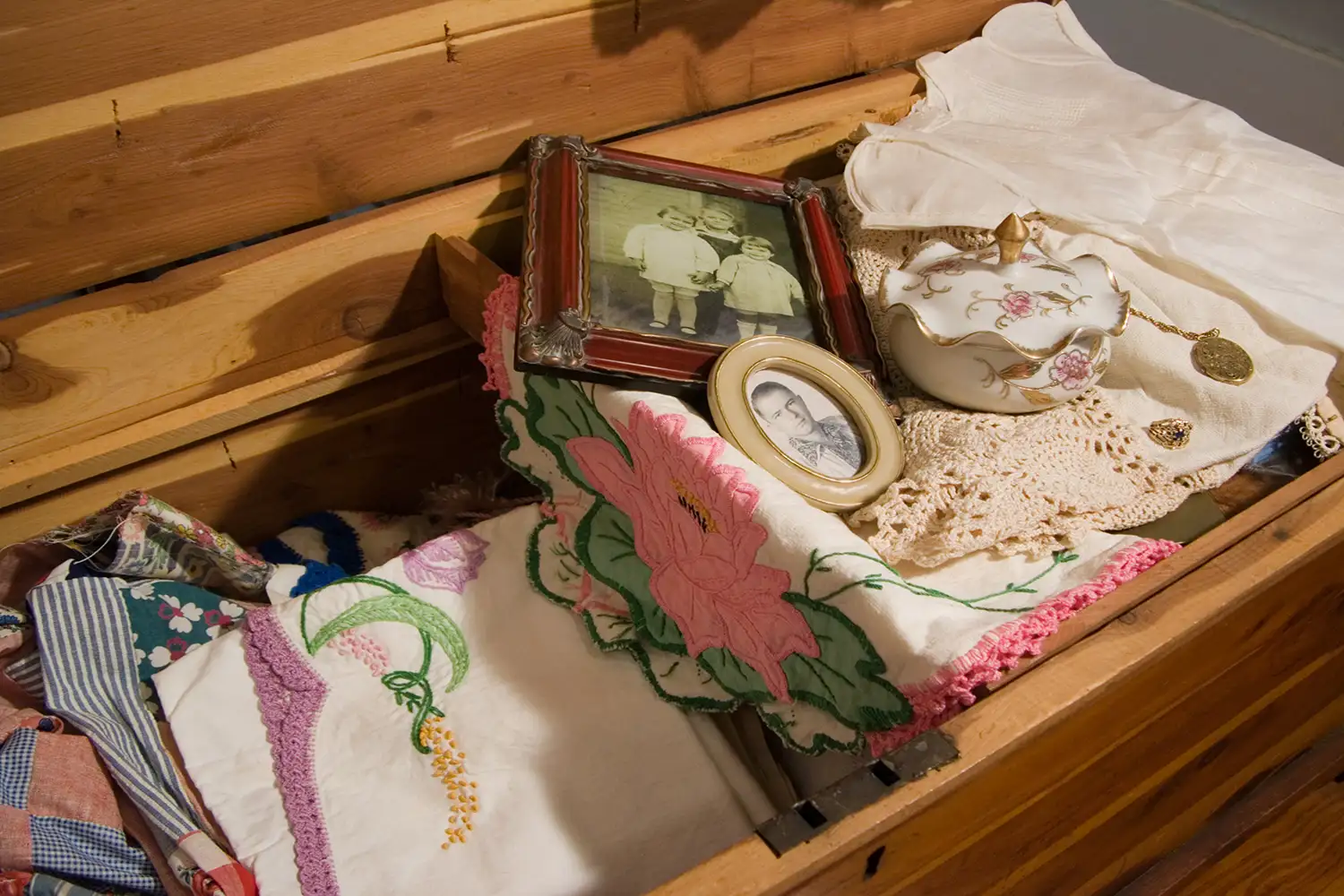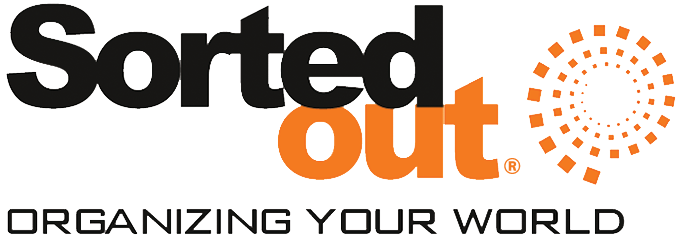Preserving Special Heirlooms (“The Family Trash”)

A good majority of the clutter in one’s home is likely “the family trash”. Do you yourself have piles, storage bins, or boxes in the depths of the attic or closets full of family heirlooms? Those items that certainly aren’t needed for everyday living, but that you can’t let rot away or be pitched forever? Preserving your family’s special heirlooms doesn’t have to be a huge chore or headache; all it takes is creating an inventory, preserving them through proper storage, a little digitization when possible, and a good attitude about making the task fun!
What is the best way to store and preserve heirlooms?
Perhaps the most important aspect of heirloom storage is preservation. If you aren’t properly storing these sensitive items, they will not last (and that makes holding onto and storing them in the first place redundant!) Many of the most treasured family keepsakes are photos and fabric items. You always want to store photos, documents, and fabric items (such as old clothing or blankets/quilts) using acid-free materials. Using acid-free boxes, folders, and/or tissue paper will help prevent deterioration over time. Where you store these special heirlooms is also important! The best place to store these items is in a space that is climate and humidity controlled. Avoid attics, basements, or garages and instead opt for a cool, dry, interior space or closet.
Always ensure you wrap fragile heirlooms (such as fine china, glass, or ornaments). It is best to use acid-free tissue paper or unprinted cotton paper as wrapping. Avoid using newspaper, as the ink can stain these items. You also want to avoid using plastic bags to wrap fragile or fabric heirlooms because they can trap moisture and cause mold or mildew. Use breathable cotton or linen bags for keepsakes and textiles.
If you want to both store and showcase any of your heirlooms, such as photos, jewelry, etc., you can use a small, rotating display to keep them out of long-term light and dust exposure. A small display like this will keep everything safe and protected, but also allows for the items to be seen and appreciated.
How do I keep all my family keepsakes organized?
One of the best things you can do to keep important heirlooms and keepsakes organized is create an inventory. You want to start by taking photos of each item. Create a digital file of these photos along with descriptions of each item and stories about them/who the items belonged to. You can simply use a spreadsheet program such as Excel, or, opt for an heirloom-specific app such as Artifcts. To then organize all the physical pieces, group by like item or family. Organize jewelry, textiles, photos, etc. by family branch and use labeled boxes or dividers to clearly separate them. When labeling, avoid writing directly on the items. Use archival labels, tags, or cards to label each item or the container the item will be stored in.
Can preserving family heirlooms be fun?
The entire point of saving and preserving family heirlooms is to also preserve the memories that come with the items; of course it can be fun! Add story tags (on cards or printed slips) that include a short-written story or background information with your items. Include who it belonged to, when it was used, and any other personal memories that may be attached to it. Create a Legacy Binder to store all the fun memories. As these items are passed down the line, future generations will then have the information you’ve preserved to read and share with their families. Including notes about the meaning or history keeps the emotional value of the items intact. This is what makes holding on to the items worth your time and effort!
What’s the best way to digitize photos and children’s artwork?
Again…yes! It takes time and effort to preserve keepsake items, but digitizing is a great way to minimize the “stuff” while still preserving the memories worth keeping! Photos and children’s artwork are two keepsake items that it may be best to digitize. Start by sorting photos by family member/years/events. This will help keep the process focused and your digital files organized once completed. Eliminate/toss any photos of people you don’t know and all negatives. (Also dispose of any blurry/incomplete photos.) If doing the digitization yourself, use a scanner to scan in the images or art. Scan in batches organized by years/family members/albums so that you don’t overwhelm yourself trying to do massive collections all at once. We also recommend that you make sure to label as you go.
If the number of items you have is too large, or, if you’d prefer to have help, use a service! For our clients we use EverPresent or LegacyBox to tackle large digitization projects. If specifically preserving children’s artwork we use ArtKive. All three of these companies offer a digital hard drive + album, but if you are doing this yourself make sure to back up your memories using cloud storage (such as OneDrive or Dropbox). You might also opt to print some of the children’s artwork on calendars, mugs, etc. for fun keepsake options that offer “display” potential but still save space in storage!
Clients interested in heirloom preservation and organization are some of our favorite to hear from. When it comes to organization, what’s more important than organizing items that protect and carry on the legacy of loved ones for generations to come? (If you ask us? Nothing is more important!) We know that, especially when it comes to family photographs, keepsake preservation can be a BIG project. If you don’t think you can afford the time it will take to start sorting and scanning each item, please reach out to info@sortedout.com and we can get one of our experts on the job! Heirloom preservation is an organization project that you, and your family members, will reap the benefits of for the rest of your lives; you won’t be sorry to have gotten it done!
Looking forward to hearing from you,
Tonia
Request a Consultation
There are so many ways that organization can help take back a space that is overwhelming and bring it to functional! We are excited to help start your journey to an organized and productive space.
Ready to get Organized?
Book a Call with Julie!
Request a Consultation
There are so many ways that organization can help take back a space that is overwhelming and bring it to functional!
We are excited to help start your journey to an organized and productive space.


